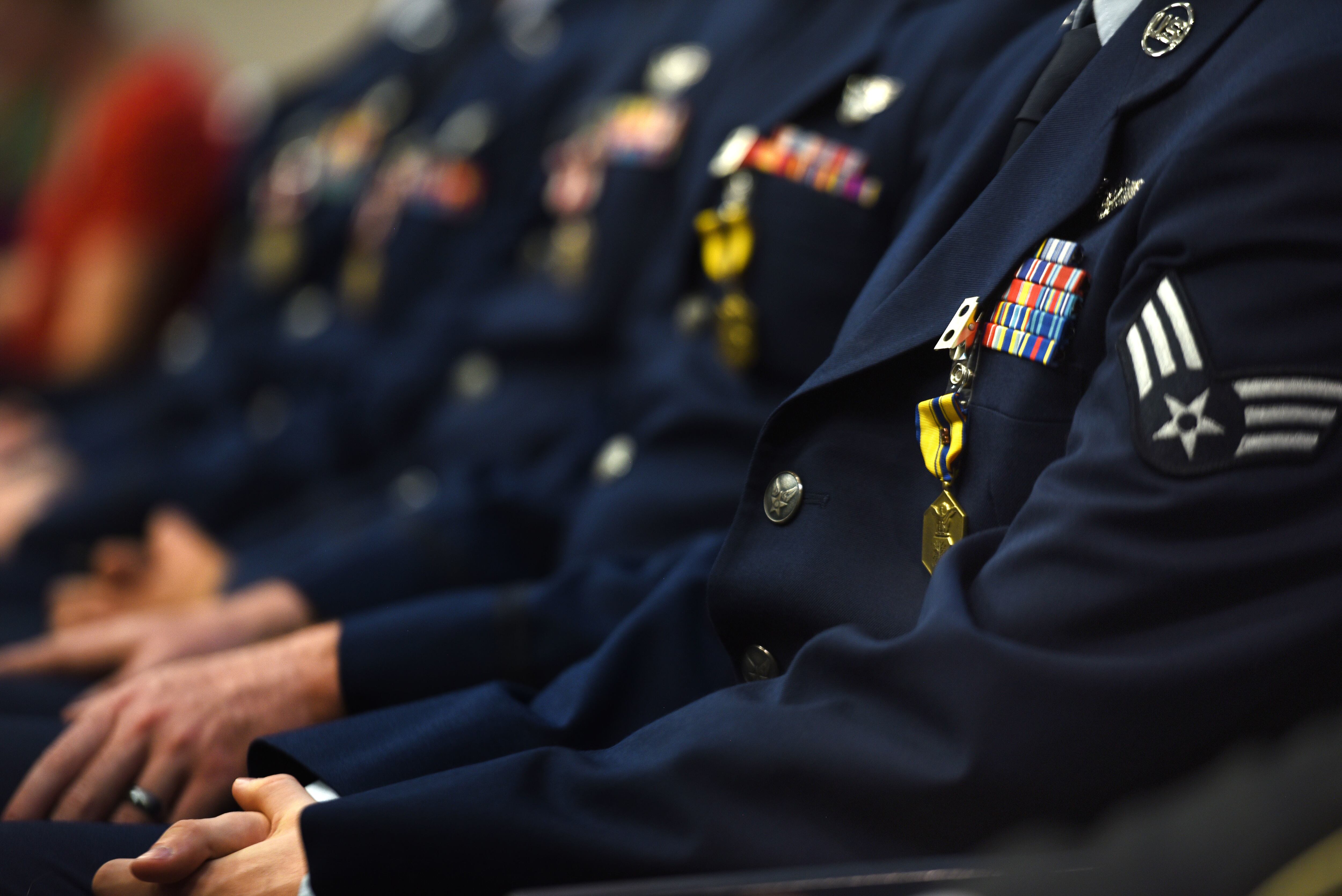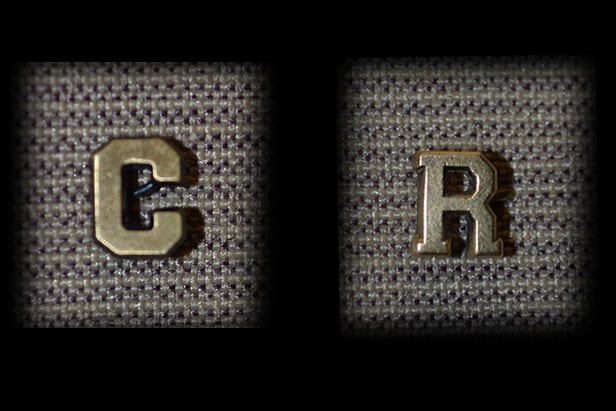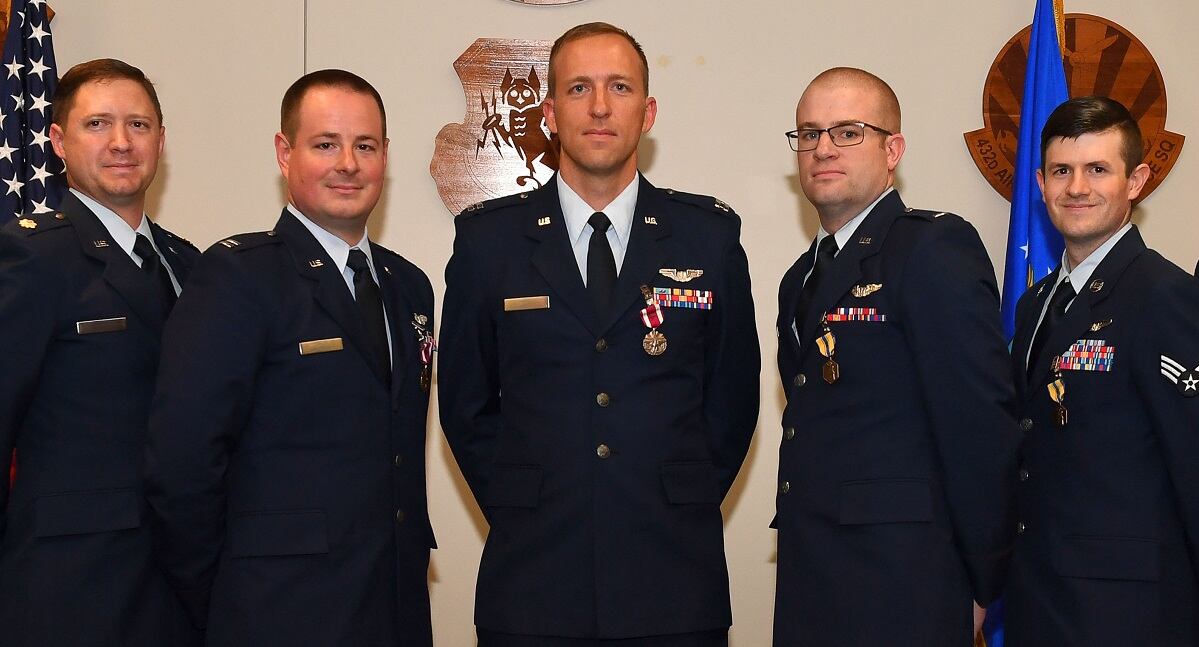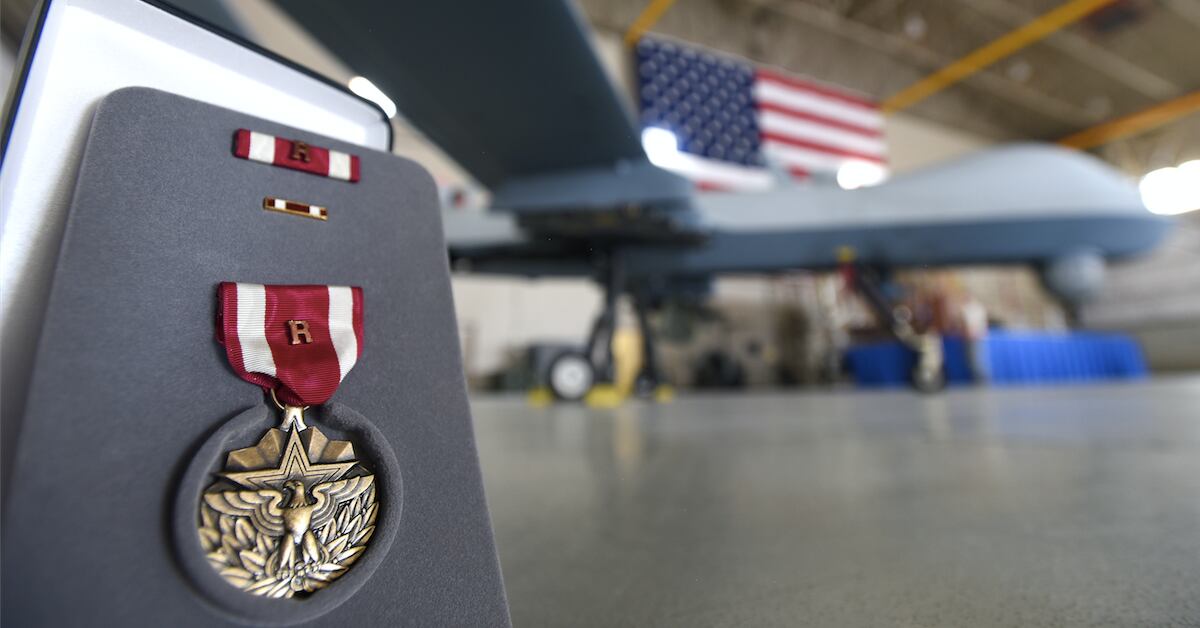The Air Force awarded its first-ever remote "R" devices Wednesday to five airmen from the 432nd Air Expeditionary Wing at Creech Air Force Base, Nevada. The airmen received either Meritorious Service medals or Air Force Commendation medals with the device.
Authorized in 2016, with criteria released just last year, the device was established to recognize airmen who have participated in “hands-on employment of a weapons system that had direct and immediate impact on a combat operation or other military operations," according to the Air Force.
Actions that qualify airmen for the device can be performed in any domain, including cyber, but must not expose the individual to hostile fire. The award ceremony Wednesday recognized remotely piloted aircraft crewmembers.
“It is a great honor to recognize the contributions of these airmen," Col. Julian Cheater, 432nd Wing commander, said during the award ceremony, according to an Air Force press release. “Much of the world will never know details of their contributions due to operational security, but rest assured that they have made significant impacts while saving friendly lives.”
The five airmen, whose surnames were all withheld from the press release, received the device for actions over the course of three separate combat operations in which they were protecting U.S. and allied ground forces.

Three combat engagements:
Retired Maj. Asa and Capt. Evan, both MQ−9 Reaper pilots, were singled out for combat operations in February 2016. Over the course of 74 days worth of reconnaissance missions in an undisclosed area of operations, the two pilots found and tracked an individual who was the theater’s No. 2 high-value target.
The pilots then coordinated a strike as the individual traveled through a dense urban area in a vehicle at high speeds. Evan’s crew “lased” the target, while Asa shot off a laser-guided missile, successfully impacting the vehicle.
Evan said the new decoration device could help shed light on the impact drone aircrews have on the battlefield.
“I went home that night, and I knew what I did,” said Evan. “I think to the outside community, something like this will give a sense of perspective.”
RELATED

Also at the ceremony, 1st Lt. Eric, another Reaper pilot, and Senior Airman Jason, the aircraft’s sensor operator, received "R" devices for their actions in saving ground troops fighting the Islamic State.
While scanning for enemy forces ahead of coalition units, the Reaper crew discovered a truck with a large caliber machine gun mounted in the bed. The enemy truck fired at friendly troops, then returned to a garage parking structure, and repeated the routine multiple times. While maneuvering the Reaper to strike, the crew noticed a group of civilian adults and children huddled in an alleyway near where the gun truck was firing.
The crew decided to hold off on a strike for fear of injuring civilians, and waited until the truck returned to its garage.
“In this particular situation, we were able to quickly assess that the enemy was not yet inflicting effective fire on friendly forces, which allowed us to completely prepare for the strike,” said Eric.
Once the truck returned to the garage, Eric and Jason took action. Using their only AGM−114 Hellfire missile, they eliminated both the vehicle and enemy fighters, while safeguarding friendly forces and civilians.
A final "R" device was awarded to Reaper pilot Capt. Abrham. While scanning a hostile area, the weather deteriorated and all the manned aircraft were forced to return to base. The Reaper, though, was able to remain on station.
Eventually, enemy fighters began to fire on friendlies.
“While battling increasingly adverse conditions, Abrham dynamically employed four Hellfire missiles, eliminating three enemy targets, two vehicles and one mortar system. He then navigated the safe return of his aircraft despite the marginal weather,” according to the Air Force.

Origins of the "R" device
The "R" device grew out of a controversial 2013 proposal to create a Distinguished Warfare Medal and give it on order of precedence higher than some awards for valor in combat. Like the "R" device, that proposed decoration aimed to honor service members who made a significant impact in combat without actually being exposed to hostile fire.
The proposition was rejected because it would have given the new medal a higher order of precedence than the Purple Heart and Bronze Star with combat valor “V” device, which seemed inappropriate to many combat veterans.
Instead, Air Force officials created a device that would attach to authorized medals. The “R” device is authorized for placement only on the Legion of Merit, Meritorious Service Medal, Air Force Commendation Medal and Air Force Achievement Medal. All devices may be awarded retroactively to Jan. 7, 2016.
Some see the struggle for an "R" device through the lens of normalizing the controversial use of drones in combat.
“As the community grows, recognizing RPA Airmen achievements with the 'R' device is another step toward normalizing remote operations relative to other weapon systems,” according to the Creech Air Force Base press release.
Kyle Rempfer was an editor and reporter who has covered combat operations, criminal cases, foreign military assistance and training accidents. Before entering journalism, Kyle served in U.S. Air Force Special Tactics and deployed in 2014 to Paktika Province, Afghanistan, and Baghdad, Iraq.





